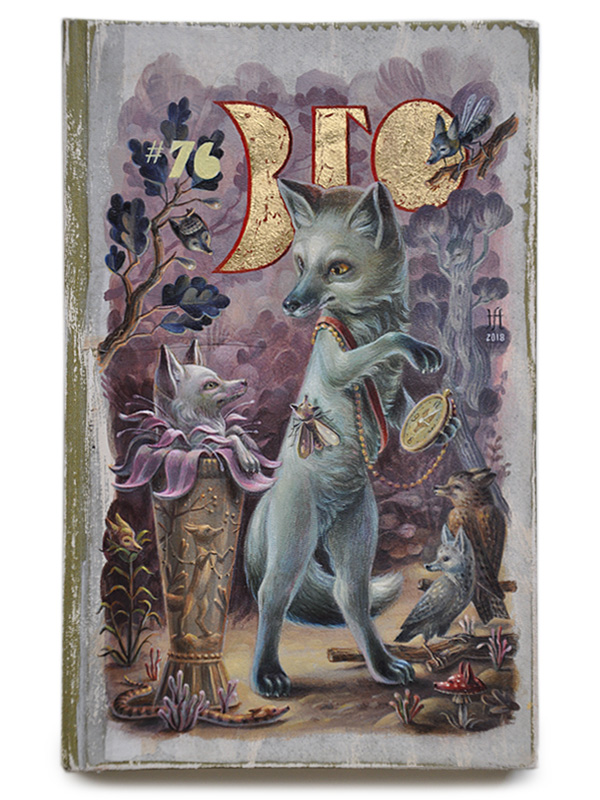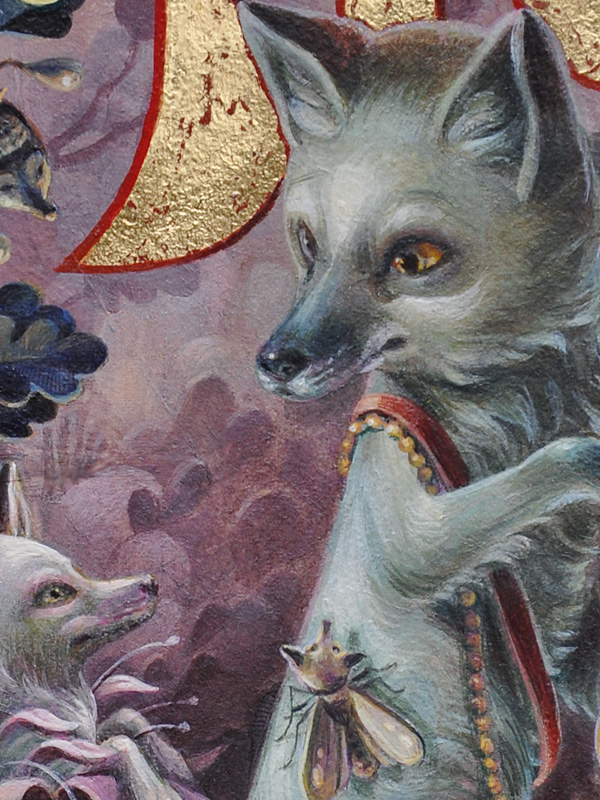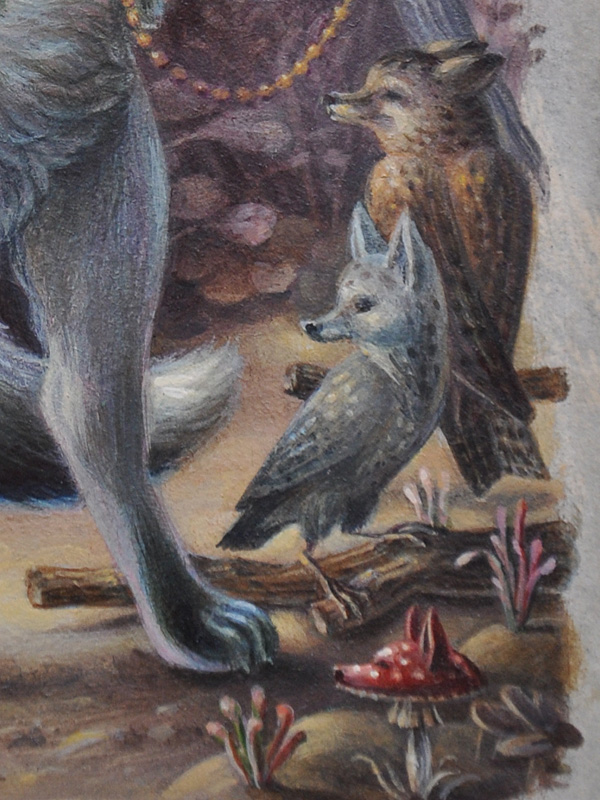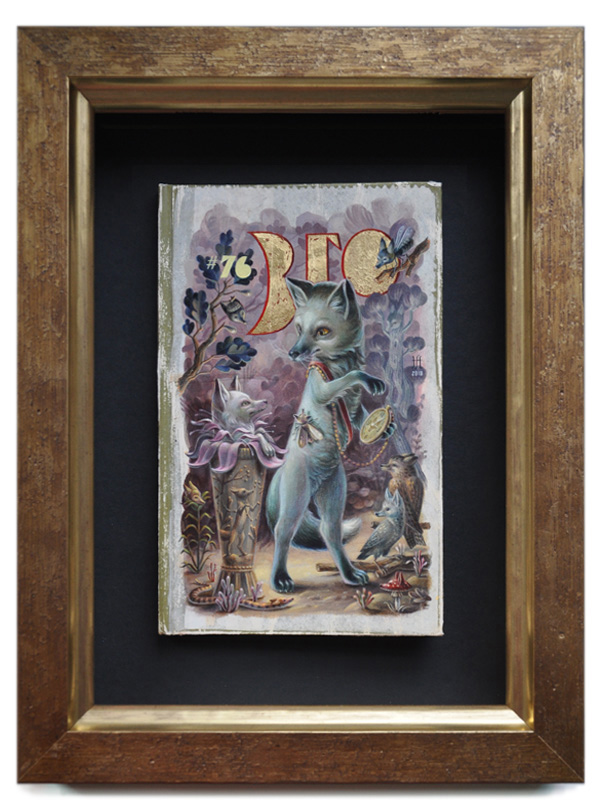Description
‘Ego’ by Femke Hiemstra
Artist: Femke Hiemstra
Title: ‘Ego’
Medium: Acrylic and 23.75 Karat gold leaf on old book
Dimensions: 7.6” x 4.7”
Framing: Framed (wood, old look gold coloured with matte gold inner lining, 12” x 9” x 1.6”, black background board)
Year of Creation: 2018
About the Series of Paintings:
“When not painting I love to be outdoors playing sport. To me, the ‘extravert’ physical world and the ‘introvert’ creative world were two different things, but recently I discovered some similar themes and decided to investigate if one could be an inspiration for the other. I came up with a series of artworks that are not sport-like at first glance, but have their conceptual starting point there nevertheless. Although they share one origin, they are all individual stories with universal themes.” – Femke Hiemstra
About ‘Nō No Rokku’:
“Ego is a piece about focus. To have blinkers on can take you further, but can also make you more self absorbed.” – Femke Hiemstra
About the Artist:
(Artist Bio)
Born and raised in Zaanstad, the Netherlands, in a nature-loving family, Femke Hiemstra (1974) wanted to be a veterinarian. Then a forest ranger. And then ‘something’ with horses.
She ended up choosing the creative route, following the artistic call inside to pursue a career as a freelance illustrator. Her distinctive style quickly captured attention and later she found success as a fine artist, showing in galleries across the globe and boasting an impressive collector and fan base.
Her dreamlike and cleverly humourous paintings and drawings traditionally feature anthropomorphic flora and fauna in darkly fantastical narratives. She uses acrylic paint or graphite pencil on various (found) canvasses, and her work is shown at galleries in Europe, the US and Australia. She now calls the Dutch capital Amsterdam her hometown.
Femke answers questions about her painting technique and inspirations:
Can you tell me about your painting technique?
I use thin layers of acrylics (Golden) and water (no medium) to create a painting. I often top the the work off with Karisma colour pencils. I paint with pure sable brushes, usually a #4 or #6, and my finger tips. I work on paper or panels but also use antique surfaces like old books, wooden holy water fonts or antique wooden panels. (The antique panels were originally used as either a base for a clock or as a platform to present wedding memorabilia or religious objects and statues on. In the latter cases, most objects were covered by a bell shaped glass that fitted the shape of the panel). For my graphite drawings I use soft pencils, usually Faber Castells, HB for thin sketch lines and 3B to 9B for the gradients.
Who or what are your sources of inspiration?
I can get inspired by anything from music lyrics, a news item, someone’s weird nickname to the silly stuff my cat does. I also get inspiration from other animal behavior, nature, old packages with hand drawn typography, tattoo’s, old encyclopedias, firework wrappers, vintage toys, comics, Japanese woodblock prints, old Little Golden Books, (tin toy) collectables and the art of Max Ernst, Hieronymus Bosch and the engravings of J.G. Posada.
How long does it take you to complete a painting?
To complete a piece it takes me a couple of days to several weeks, depending on the size, technique and the flow I’m in.
What kind of themes do you like to paint?
My work has once been described as ‘otherworldly folklore’ and I much like that description. The narrative of my ‘painted stories’ involve characters, inanimates and flora and fauna and is part real and part fictitious. The characters interact in a figurative surrounding yet all is cast in a surreal light. Although I don’t paint the human figure very often the creatures in the scenes behave like them, with the same glory or shortcomings as we might display. Furthermore I’m very attracted to contrasts. Humour is part of my stories but I’m also drawn to darker themes that involve strong emotions like battles, a hunt, the loss of a loved one or the ‘romantic’ death.




